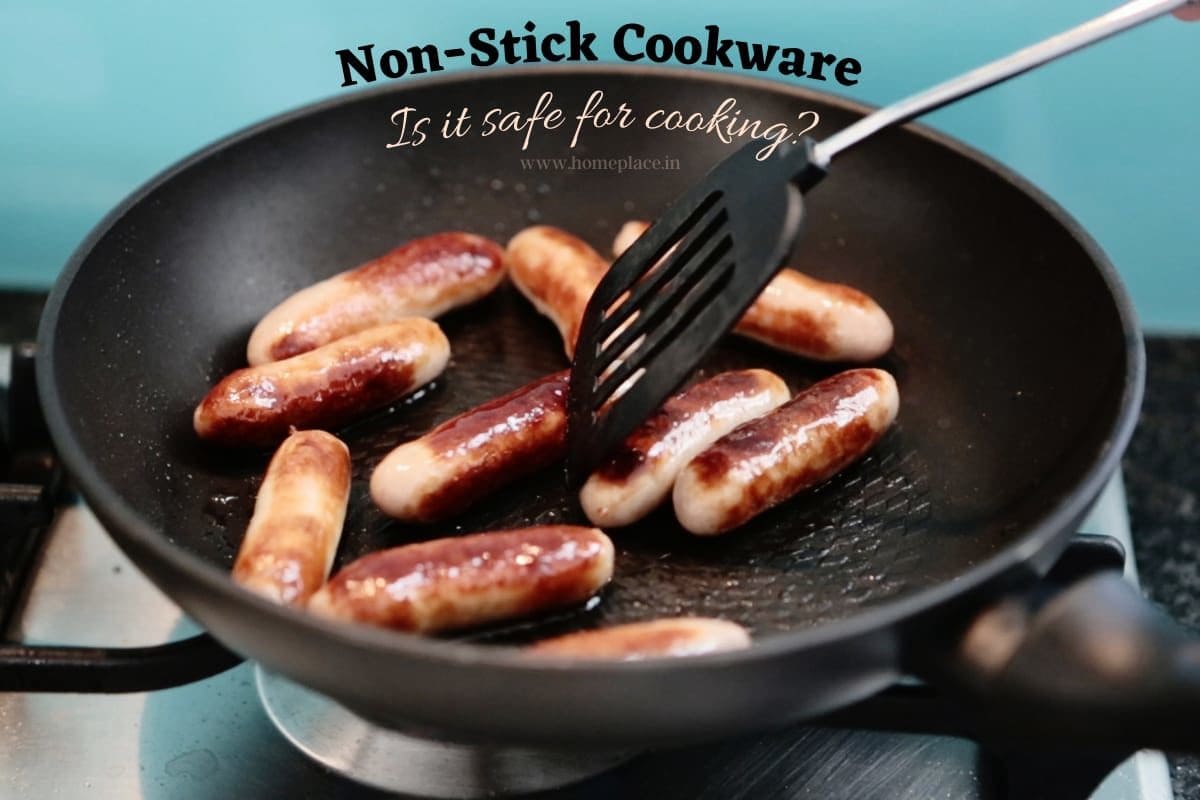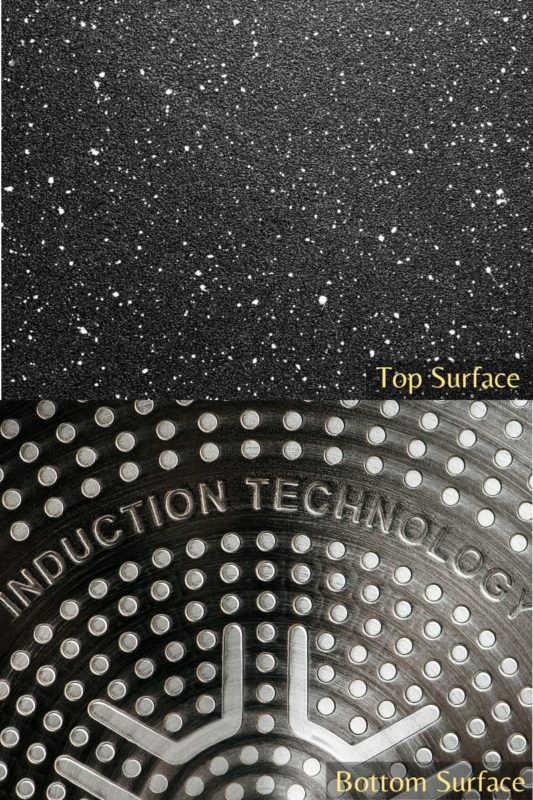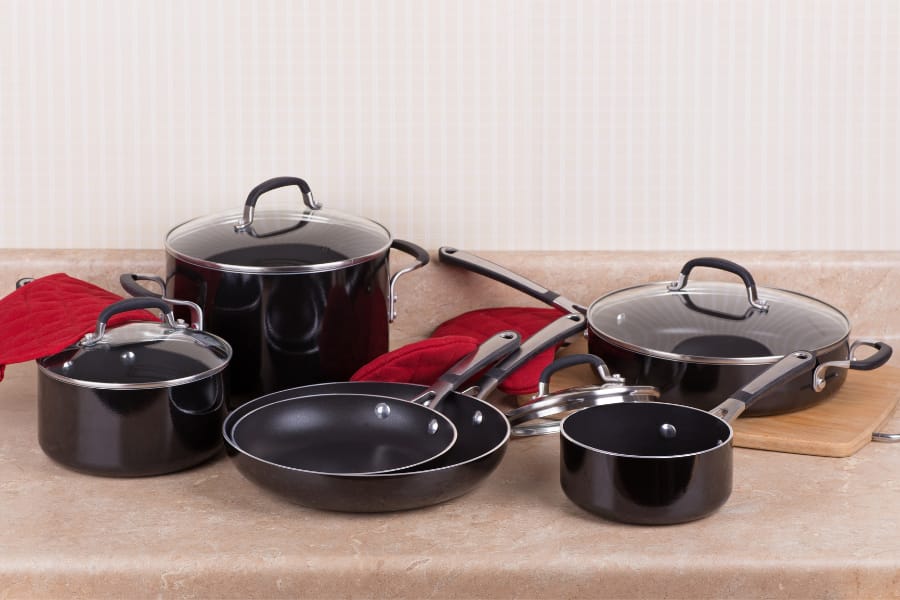Non-stick cookware is known to be the most popular kitchenware among all other cookware in India. As this kind of material prevents the food to stick on the cookware surface, it requires less effort to cook. This is why many people prefer it.
But, is non-stick cookware safe for cooking?
Yes, it is safe unless overheated and made of high-quality material. But, why so?
To know the answer, we must understand what it is made of and its effects on health as well as during cooking. We must ensure it is food-safe and hygienic for cooking.

What is Non-stick Cookware Made Of?
The term “non-stick” is rightfully explained by its name. Non-stick cookware is basically an aluminum or steel cookware with a Teflon coating on the surface.
Teflon is chemically known as polytetrafluoroethylene (PTFE), a polymer based on carbon and fluorine. When heated above 260°C, the polymer starts to break down and decomposes at 350°C.
The Teflon coating on the non-stick cookware surface prevents food from sticking to the body. You can quickly fry or brown your ingredients and get the desired texture. The best non-stick cookware will guarantee you a hassle-free cooking experience.

Advantages of Using Non-stick Cookware
Disadvantages of Using Non-stick Cookware

So, Is a Non-Stick Cookware Safe for Cooking?
There has been a prolonged debate whether non-stick cookware is safe for cooking. The fume of the polymer can make you sick with symptoms of fever, flu, and sore throat when consumed in a considerable amount. It can also induce problems in the lungs when overheated. Though this is is rare, it can create polymer fume fever, which is not desirable.
But, in general, that much heat is not required during cooking. Deep frying involves heating at the highest range of temperature that is typically less than 200°C. Non-stick cookware is safe for cooking when heated with a low or medium flame that does not exceed 260°C. While cooking, you should also be careful as dry heating can damage the surface.
Alternatives to Non-Stick Cookware
- Cast Iron Cookware: It is another safe alternative to non-stick cookware. Unlike non-stick cookware, cast iron cookware does not react with the food when heated at a high temperature.
- Hard Anodized Cookware: It is a special type of aluminum cookware with the anodized surface. Hard anodized cookware is ideal for people who do not want a typical non-stick cookware.
- Stainless Steel Cookware: It is the safest alternative to non-stick cookware. Being chemically non-reactive to food items does not have any adverse effect on the food. But the food sticks at the bottom if not appropriately oiled. The stainless steel cookware is built with a food grade of material which can be a relief to the customer.
- Ceramic and Granite Cookware: It is almost chemically inert and does not affect the food adversely. But it has several limitations like brittleness, less versatility, and high cost. Granite cookware is also good for use.
Non-Stick Cookware Safety – Bottom Line
It has been controversial whether cooking with non-stick cookware is safe. The condition is similar to the safety of granite cookware. But, it is the preferable cooking utensil among Indian consumers for hassle-free cooking at a budget price. The non-stick Teflon coating on the pan helps the food not stick around the cookware, reducing the time and effort.
If you are looking for a user-friendly cookware, there is no better option than non-stick cookware. Considering every benefit, drawback, and safety aspect of the non-stick cookware, we highly recommend it. But you should not overheat the cookware and damage the Teflon coating. As long as you handle it with care, there won’t be any problem.
